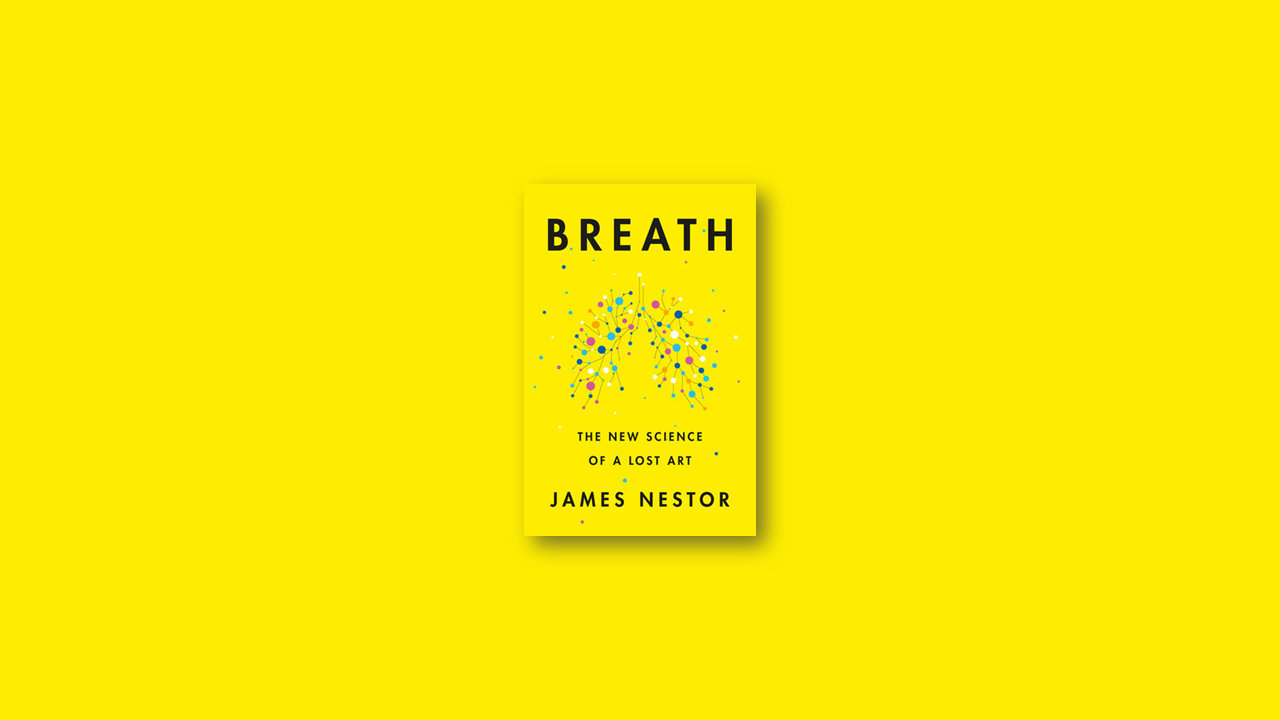Kindle | Hardcover | Audiobook
No matter what you eat, how much you exercise, how skinny or young or wise you are, none of it matters if you’re not breathing properly.
There is nothing more essential to our health and well-being than breathing: take air in, let it out, repeat twenty-five thousand times a day. Yet, as a species, humans have lost the ability to breathe correctly, with grave consequences.
In Breath, the renowned journalist James Nestor try to figure out what went wrong and how to fix it. Drawing on thousands of years of medical texts and recent cutting-edge studies in pulmonology, psychology, biochemistry, and human physiology, Breath turns the conventional wisdom of what we thought we knew about our most basic biological function on its head. You will never breathe the same again.
But why do I need to learn how to breathe?
After all, we’ve been breathing our whole lives without paying attention to it most of the time. Breathing seems more like a passive action at first glance. We breathe to live. When we stop breathing, we die.
But breathing isn’t as binary as it seems. James says the more he immerse himself in the art of breathing, the more invested he becomes in sharing the basic truth. Starting now, with every breath you take, you’ll have a deeper understanding of breathing and how best to do it.
Keep breathing with your nose.

You might ask “why should breathing through your nose and your mouth be any different?”
Well, most people know that the nose filters, heats and treats raw air. But a few realize inhaling through the nose can trigger different hormones in our bodies, lower our blood pressure, monitors heart rate and even helps store memories. It’s this incredible organ that orchestrates enumerable functions in our body to keep us balanced.
Inhale and exhale for the same amount of time.

There are as many ways to breathe as there are foods to eat. Each way we breathe will affect our bodies in different ways. But James says the most efficient breathing rhythm occurs when both the length of respiration and total breaths per minute were locked into a spooky symmetry: 5.5-second inhales followed by 5.5-second exhales. This translates to about 5.5 breaths a minute.
Exhaling slowly helps you relax.

Put your hand over your heart. Take your breath in slowly, you’re going to feel your heart speed up. Now, exhale slowly. You should be feeling your heart slow down.
The reason is simple. Exhaling is a parasympathetic response. As you inhale, your diaphragm lowers and sucks a bunch of blood into the thoracic cavity. As you exhale, the blood shoots back out through your body and calms your mental state.
You can increase your lung’s capacity.

Many people believe whatever they’re born with is what they’re going to live with for the rest of our lives. This is of course far from the truth. Free divers know this better than anyone. Herbert Nitsch, a multiple world record holder, reportedly has a lung capacity of 14 liters – more than double that of an average male. Neither Nitsch nor any other free divers started out like this. These divers made their lungs larger by force of will. They taught themselves how to breathe in ways that dramatically changed the internal organs of their bodies.
Fortunately for the rest of us, we don’t need to dive down hundreds of feet. Any regular workout or breathing exercise that stretches your lungs can increase your lung’s capacity. Moderate exercise like walking or cycling has also been shown to boost lung size by up to fifteen percent.
Anxiety and shallow breathing feed off each other.
People with panic or obsessive-compulsive disorders constantly have low carbon dioxide levels and a much greater fear of holding their breath. To avoid another attack, they breathe far too much and eventually become hypersensitized to carbon dioxide and panic if they sense a rise in this gas. They are anxious because they’re over-breathing. They’re over-breathing because they’re anxious.
Our ancestors have survived on short breaths for decades. We still do today. That doesn’t mean short breaths are optimal at all. Over time, shallow breathing limits the range of our diaphragms and lung capacity. The result is the high-shouldered, chest-out, neck-extended posture and other respiratory problems.
Our parents are right. A ‘deep breath’ works.

Picture yourself in a boat, taking short and swallow strokes. Are you going to get to where you want? Yes, you will get there. The problem is it’s not efficient and probably takes a long time. What if instead you take deep and long strokes to get there faster?
The same goes for breathing. You want to make it easy and efficient for your body to get air, especially when breathing is an act you’re doing 25,000 times a day. It’s surprising just by extending those inhales and exhales through your nose, you can move your diaphragm up and down a little more and have a profound effect on your mental state.
Take several rounds of deep breaths to open your rib cage. Start counting from one to ten and over and over with every exhale. Then keep repeating it. It might feel like a brutal workout after first. But your diaphragm will get accustomed to this wider range, and eventually deep breathing will become second-nature to you.
Kindle | Hardcover | Audiobook



